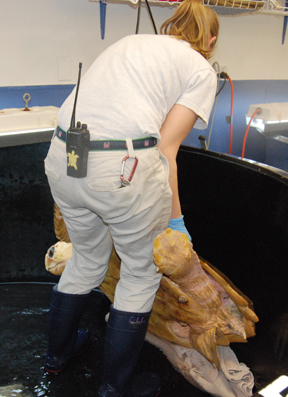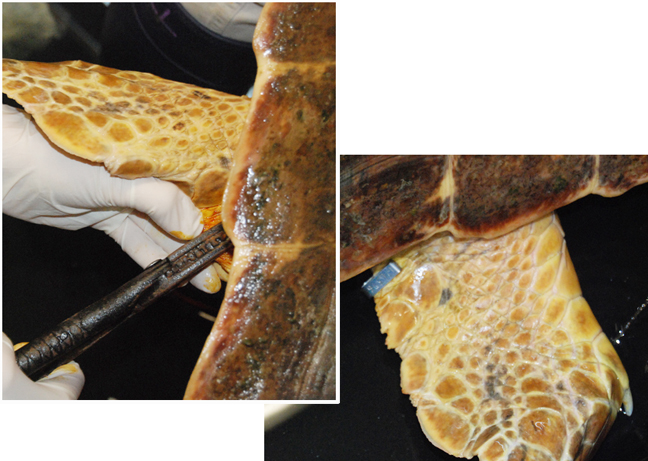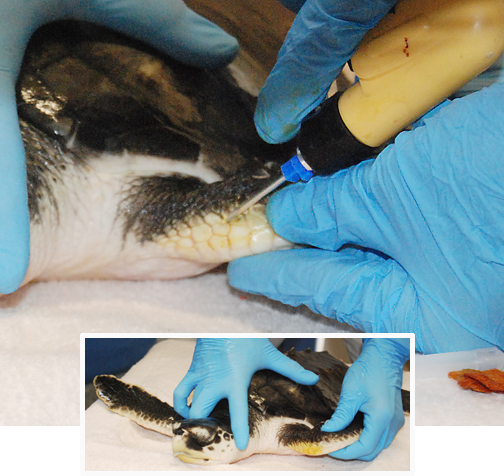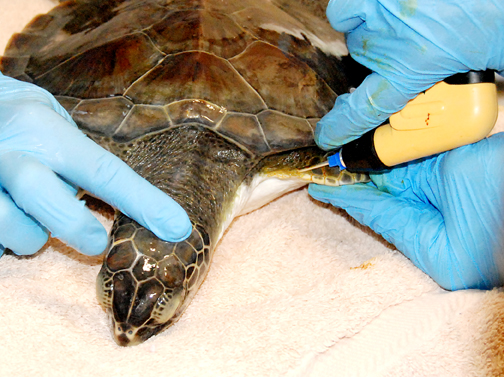Four of the five sea turtles in Rehab were tagged by Sarah Finn from the office of sea turtle biologist Matthew Godfrey of the NC Wildlife Resources Commission. Aquarist Christian Legner (below with Jason #1) did the preparations and assisted.  Two types of tags were used, depending on the size of the turtle. Titanium flipper tags are modified livestock tags that pierce thru the flesh and clamp closed. They are attached on the inner side of both back flippers of larger turtles.
Two types of tags were used, depending on the size of the turtle. Titanium flipper tags are modified livestock tags that pierce thru the flesh and clamp closed. They are attached on the inner side of both back flippers of larger turtles.
Below (left) Jason #1, a large juvenile loggerhead, is getting the left back flipper tag clamped. (right) The right back flipper has already been tagged.

Smaller turtles get only a PIT (passive integrated transponder) tag in a front shoulder. Large turtles such as Jason #1 and Romano are given a PIT tag in addition to the flipper tags. PIT tags are injected under the skin (as with microchipping cats and dogs), are more expensive than flipper tags, and require an electronic, hand-held device to be read. But, they are not as easily lost as flipper tags.
(below) Buster, a small Kemp’s ridley, receives only a PIT tag.

(below)Autumn, a small green sea turtle, receives only a PIT tag.
 Romano, the other juvenile loggerhead, was also tagged but he tends to try to maintain control over all situations, thus, no photo. However, here is a link to his joyful shower when his tank was being refilled with salt water after being tagged: http://youtu.be/ZCRVXHIs3FE
Romano, the other juvenile loggerhead, was also tagged but he tends to try to maintain control over all situations, thus, no photo. However, here is a link to his joyful shower when his tank was being refilled with salt water after being tagged: http://youtu.be/ZCRVXHIs3FE
